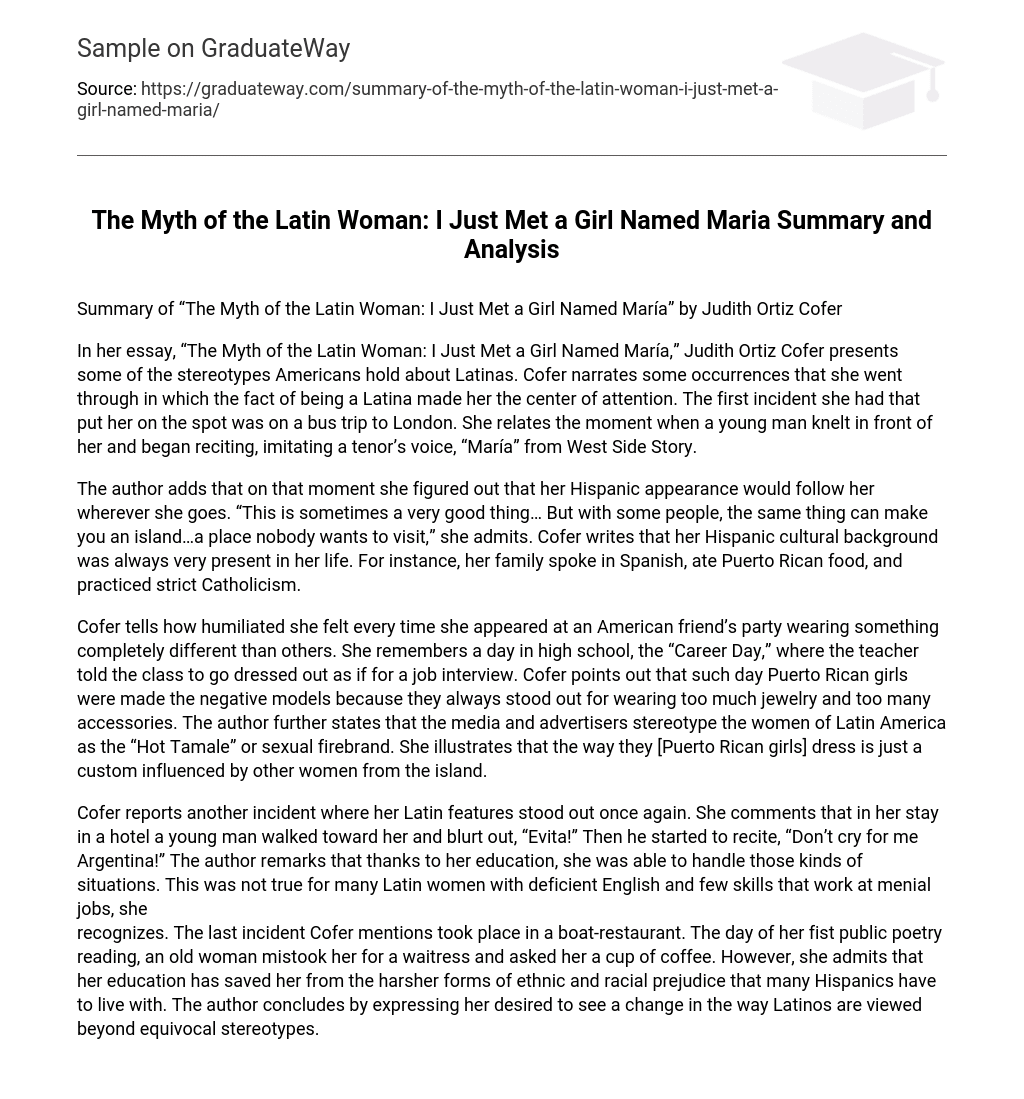Summary of “The Myth of the Latin Woman: I Just Met a Girl Named María” by Judith Ortiz Cofer
In her essay, “The Myth of the Latin Woman: I Just Met a Girl Named María,” Judith Ortiz Cofer presents some of the stereotypes Americans hold about Latinas. Cofer narrates some occurrences that she went through in which the fact of being a Latina made her the center of attention. The first incident she had that put her on the spot was on a bus trip to London. She relates the moment when a young man knelt in front of her and began reciting, imitating a tenor’s voice, “María” from West Side Story.
The author adds that on that moment she figured out that her Hispanic appearance would follow her wherever she goes. “This is sometimes a very good thing… But with some people, the same thing can make you an island…a place nobody wants to visit,” she admits. Cofer writes that her Hispanic cultural background was always very present in her life. For instance, her family spoke in Spanish, ate Puerto Rican food, and practiced strict Catholicism.
Cofer tells how humiliated she felt every time she appeared at an American friend’s party wearing something completely different than others. She remembers a day in high school, the “Career Day,” where the teacher told the class to go dressed out as if for a job interview. Cofer points out that such day Puerto Rican girls were made the negative models because they always stood out for wearing too much jewelry and too many accessories. The author further states that the media and advertisers stereotype the women of Latin America as the “Hot Tamale” or sexual firebrand. She illustrates that the way they [Puerto Rican girls] dress is just a custom influenced by other women from the island.
Cofer reports another incident where her Latin features stood out once again. She comments that in her stay in a hotel a young man walked toward her and blurt out, “Evita!” Then he started to recite, “Don’t cry for me Argentina!” The author remarks that thanks to her education, she was able to handle those kinds of situations. This was not true for many Latin women with deficient English and few skills that work at menial jobs, she
recognizes. The last incident Cofer mentions took place in a boat-restaurant. The day of her fist public poetry reading, an old woman mistook her for a waitress and asked her a cup of coffee. However, she admits that her education has saved her from the harsher forms of ethnic and racial prejudice that many Hispanics have to live with. The author concludes by expressing her desired to see a change in the way Latinos are viewed beyond equivocal stereotypes.





